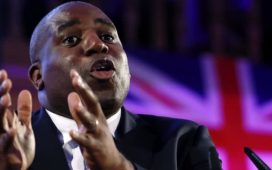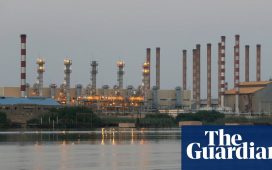Sajid Javid has announced the date of the budget as 11 March with a promise to kickstart a decade of renewal. Fresh from the landslide Conservative victory, the chancellor will use the event to formalise spending commitments made before the general election.
The budget will be Britain’s first in more than four decades as a non-EU member state, and take place against a backdrop of subpar economic growth and a scramble to negotiate a trade deal with Brussels before the end of the year.
Here are five key areas Javid will be expected to target:
Infrastructure
The chancellor announced the date of the budget at the construction site of a £350m extension to the Manchester tram network, sending a signal that infrastructure spending – particularly in the north of England – would form the backbone of his maiden tax and spending event.
The Tory manifesto included plans to ramp up capital spending by about £20bn above current levels, indicating there is plenty of additional funding available for projects across the country. A key question mark will be whether the government goes ahead with the first phase of HS2 route between London and Birmingham.
Regions
Javid is expected to announce a shake-up of Treasury rules to enable higher levels of investment in the north and the Midlands.
Government investment decisions are based on the generation of gross value added, a measure of economic output that critics argue has traditionally benefited London and the south-east. The new rules are expected to include targets for improving wellbeing or reducing regional productivity gaps.
Public services
Boris Johnson made increasing spending on public services a central plank of his election campaign, promising to bring to an end the decade of austerity initiated by his Conservative predecessors.
Javid will be expected to deliver on the prime minister’s priorities, including funding for new hospitals, training thousands of new police officers and funding schools and vocational training. One area to watch will be social care. Beyond a promise to raise funding by £1bn, the issue was a notable black hole in the Conservative manifesto.
Overall, the manifesto included about £1.5bn in additional day-to-day spending on public services next year above existing levels.

Environment
The Treasury said the chancellor would prioritise the environment in the budget. The government has committed to reaching net-zero carbon emissions by 2050, but has so far announced few spending-related measures to help hit the target.
Policies announced in the Tory manifesto that could feature at the budget include plans to make homes more energy-efficient, with £9.2bn for spending on insulation and similar measures for schools and hospitals. Offshore wind is to reach 40GW of capacity by 2030, more than 11 times the capacity of the Hinkley C nuclear power station under construction in Somerset. There will also be an investment of £800m for carbon capture and storage – a technology that stores CO2 emissions – and £500m to help energy-intensive industries reduce their carbon output.
Tax
Johnson promised to cut taxes before the election. Changes include raising the threshold for national insurance contributions to £9,500 a year in 2020-21 as well as reducing the burden of business rates on companies.
The Treasury is, however, constrained by the public finances, which remain in deficit despite a decade of Conservative promises to eliminate the gap between public spending and tax income. Johnson said before the election that he would freeze a cut in corporation tax to provide about £6bn for other priorities.
Javid will announce new rules allowing him to increase public borrowing to take advantage of low interest rates and to invest for the future. However, he will still target a balanced day-to-day spending budget within three years.













